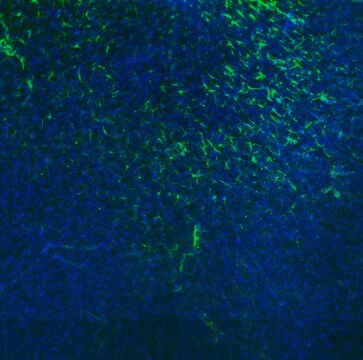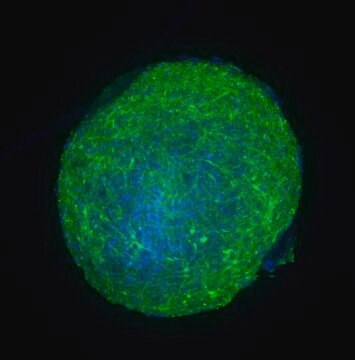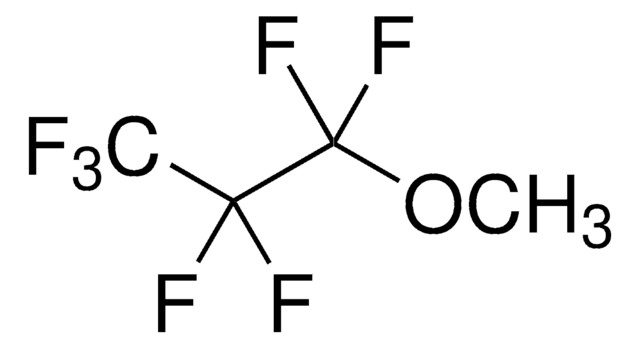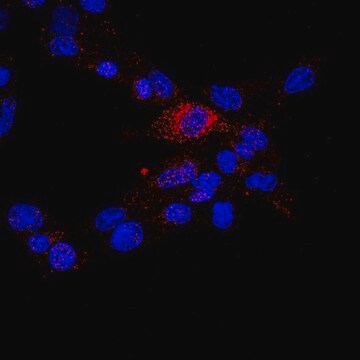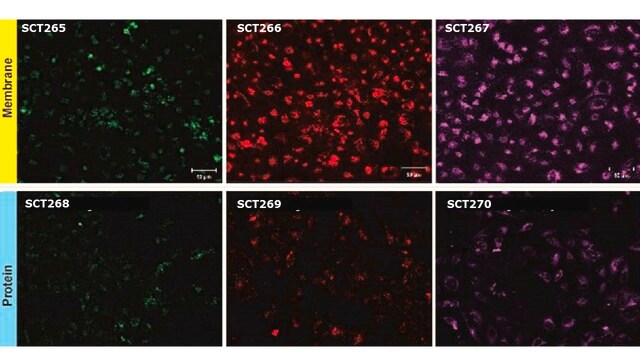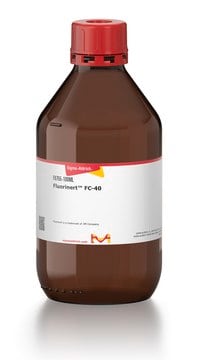CBL304
Anti-Serum Amyloid P Antibody, clone 5.4A
clone 5.4A, Chemicon®, from mouse
Synonym(s):
Component P
Sign Into View Organizational & Contract Pricing
All Photos(1)
About This Item
UNSPSC Code:
12352203
eCl@ss:
32160702
NACRES:
NA.41
Recommended Products
biological source
mouse
antibody form
affinity isolated antibody
antibody product type
primary antibodies
clone
5.4A, monoclonal
species reactivity
human
manufacturer/tradename
Chemicon®
technique(s)
ELISA: suitable
isotype
IgG1
NCBI accession no.
UniProt accession no.
shipped in
dry ice
target post-translational modification
unmodified
Gene Information
human ... APCS(325)
General description
Amyloid consists mainly of rigid, non-branching protein fibrils, together with rod-like aggregates of a pentagonal-shaped glycoprotein called amyloid P protein. Amyloid P protein, also known as component P, comprises 10 per cent of amyloid tissue and is present in all but the central nervous system forms of amyloid. Amyloid P protein is a constituent of normal basement membranes and the microfibrillaryelastic fiber network.
Specificity
This antibody is specific for human serum amyloid P.
FUSION PARTNER: NS1 myeloma cell line
FUSION PARTNER: NS1 myeloma cell line
Immunogen
Human serum amyloid P
Application
Anti-Serum Amyloid P Antibody, clone 5.4A detects level of Serum Amyloid P & has been published & validated for use in ELISA.
Development of ELISA assay for the estimation of human serum amyloid P using CBL 305 biotin conjugate as the labelled pair
Optimal working dilutions must be determined by the end user.
Optimal working dilutions must be determined by the end user.
Research Category
Neuroscience
Neuroscience
Research Sub Category
Neurodegenerative Diseases
Neurodegenerative Diseases
Physical form
Format: Purified
The monoclonal is presented at a concentration of 100ug in phosphate buffered saline containing 10mM sodium azide. We recommend that each laboratory determine an optimum working titre for use in its particular application.
Storage and Stability
For use within 1 month of purchase store at +4°C, for long term storage aliquot antibody into small volumes and store at -20°C.
Legal Information
CHEMICON is a registered trademark of Merck KGaA, Darmstadt, Germany
Disclaimer
Unless otherwise stated in our catalog or other company documentation accompanying the product(s), our products are intended for research use only and are not to be used for any other purpose, which includes but is not limited to, unauthorized commercial uses, in vitro diagnostic uses, ex vivo or in vivo therapeutic uses or any type of consumption or application to humans or animals.
Not finding the right product?
Try our Product Selector Tool.
Storage Class Code
10 - Combustible liquids
WGK
WGK 1
Certificates of Analysis (COA)
Search for Certificates of Analysis (COA) by entering the products Lot/Batch Number. Lot and Batch Numbers can be found on a product’s label following the words ‘Lot’ or ‘Batch’.
Already Own This Product?
Find documentation for the products that you have recently purchased in the Document Library.
C J de Haas et al.
Infection and immunity, 68(9), 4954-4960 (2000-08-19)
Lipopolysaccharide (LPS) is an amphipathic macromolecule that is highly aggregated in aqueous preparations. LPS-binding protein (LBP) catalyzes the transfer of single LPS molecules, segregated from an LPS aggregate, to high-density lipoproteins (HDL), which results in the neutralization of LPS. When
A synthetic lipopolysaccharide-binding peptide based on amino acids 27-39 of serum amyloid P component inhibits lipopolysaccharide-induced responses in human blood.
de Haas, C J, et al.
Journal of immunology (Baltimore, Md. : 1950), 161, 3607-3615 (1998)
Our team of scientists has experience in all areas of research including Life Science, Material Science, Chemical Synthesis, Chromatography, Analytical and many others.
Contact Technical Service